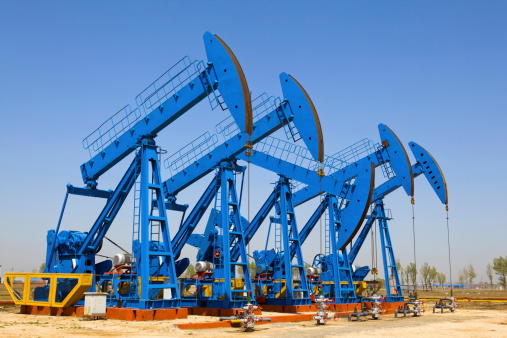Energy
What Schlumberger and Kinder Morgan Earnings Will Mean for Oil Sector
Published:
Last Updated:

What may be surprising is that Schlumberger stock is up about 1% through the first half of the year, while Kinder Morgan stock is down more than 9%. In the second quarter, Schlumberger stock is up more than 3% while Kinder Morgan shares fell more than 8%.
For the second quarter, Schlumberger is expected to post earnings per share (EPS) of $0.79 on revenues of $9.02 billion, compared with EPS of $1.37 on revenues of $12.05 billion in the first quarter of 2014. In the first quarter of this year, the company’s EPS came in at $1.06, an upside surprise of 19%. Revenues dropped nearly 20% year-over-year in the first quarter, due almost entirely to low pricing and less exploration and drilling activity. The company has axed 20,000 jobs since the end of the third quarter of 2014.
The somewhat better news for Schlumberger is the number of drilled but uncompleted wells in the United States. The total has been estimated at 2,500 to 3,500 wells, and if crude oil prices remain around $60 a barrel, more completions may be ordered. Credit Suisse has an Outperform rating on the stock and a price target of $86.00, but it lowered its estimate for Schlumberger’s second-quarter EPS from $3.90 to $3.50.
The consensus price target on the stock is $101.06, and at Thursday’s closing price of $83.55 the implied upside is nearly 21%. That is value trap territory, especially now that oil prices have dropped closer to $50 a barrel than to $60. Schlumberger is scheduled to report second-quarter results before markets open next Thursday, July 16.
When Kinder Morgan reports second-quarter earnings after markets close next Wednesday, analysts are expecting the midstream giant to post $0.19 in EPS on revenues of $3.96 billion. Last year, before the acquisition of its master limited partnership (MLP), Kinder Morgan posted EPS of $0.27 on revenues of $3.94 billion. In the first quarter, which includes the acquisition of the MLP, EPS totaled $0.22 on revenues of $3.66 billion, both below analysts’ estimates.
Kinder Morgan expects to pay a total fiscal year 2015 dividend of $2.00 per share, a 15% increase compared with the 2014 dividend of $1.74. The company’s budgeted cash coverage in excess of declared dividends is $654 million, based on an assumed average West Texas Intermediate (WTI) crude oil price of about $70 a barrel and a Henry Hub natural gas price of $3.80 per million BTUs. Neither of those assumptions is likely to be met, unless there is a huge shift in U.S. energy markets.
The consensus price target on Kinder Morgan stock is $47.50. The shares closed at $37.50 on Thursday, for an implied upside of 26.7%. While this looks like value trap territory as well, the company’s current dividend yield of 5.1% is more than double Schlumberger’s 2.4% yield. That is not because Kinder Morgan’s business is twice as good, but because the company is managed to maximize shareholder returns, period.
Schlumberger is a far better bellwether of the energy sector than is Kinder Morgan, primarily because it reflects commodity pricing more accurately. Kinder Morgan’s primary business is based on regulated fees and contracts that run for years at fixed prices. Which is a better investment choice is an exercise left for the reader.
Retirement planning doesn’t have to feel overwhelming. The key is finding expert guidance—and SmartAsset’s simple quiz makes it easier than ever for you to connect with a vetted financial advisor.
Here’s how it works:
Why wait? Start building the retirement you’ve always dreamed of. Click here to get started today!
Thank you for reading! Have some feedback for us?
Contact the 24/7 Wall St. editorial team.